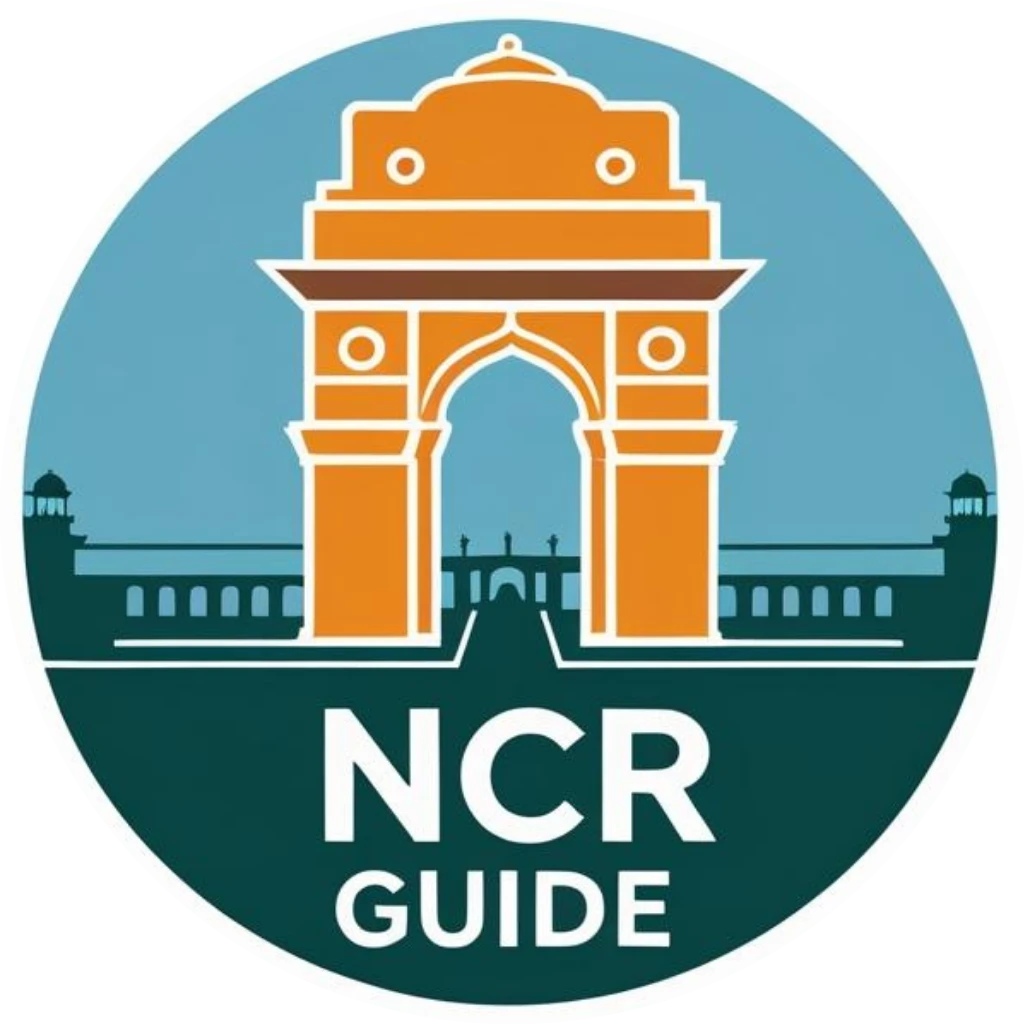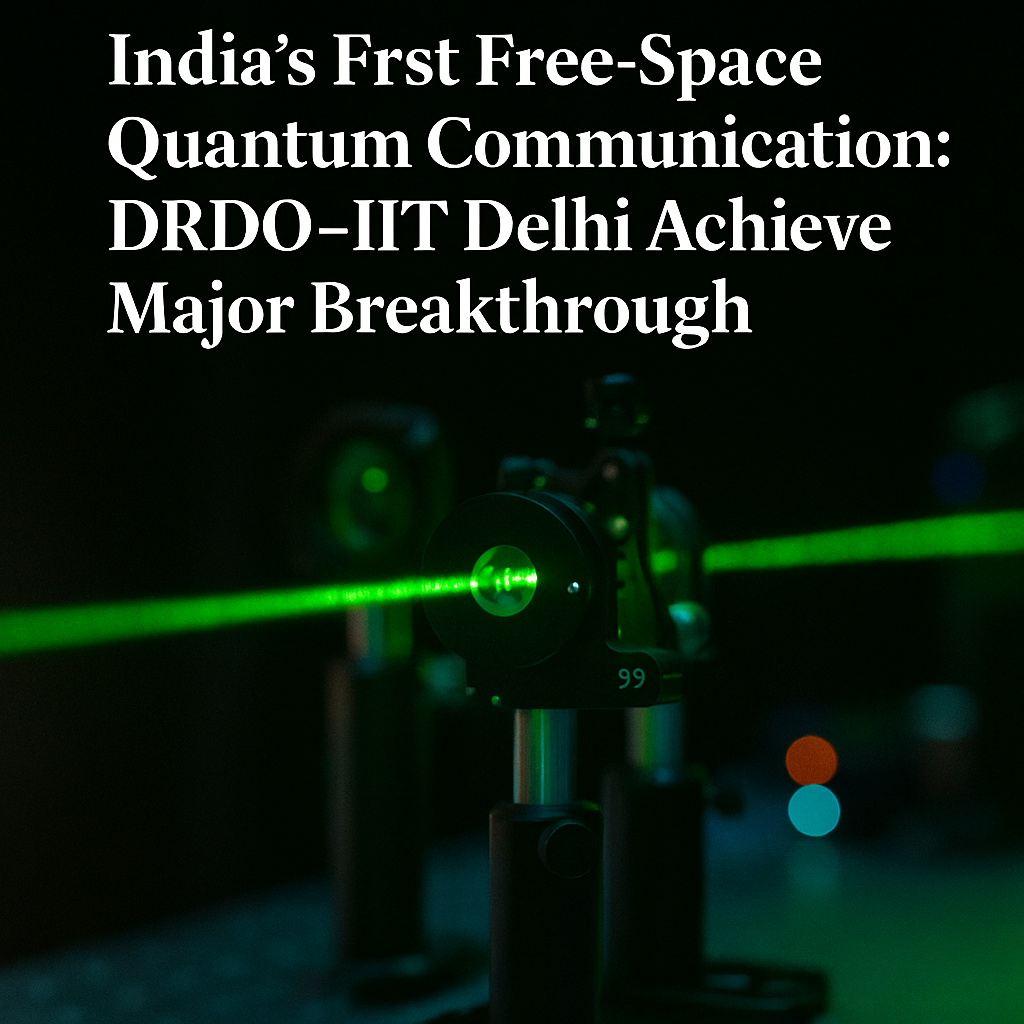India’s First Free-Space Quantum Communication Trial Successfully Completed
India has taken a giant leap toward next-generation secure communications with the successful demonstration of its first free-space quantum entanglement transmission, jointly conducted by DRDO and IIT Delhi. The trial, completed within IIT Delhi’s campus, represents a landmark moment in India’s quantum technology journey.
What Is Free-Space Quantum Communication and Why Is It Revolutionary?
Unlike traditional fiber-based systems, free-space quantum communication uses entangled photons transmitted through air, enabling secure, long-distance communication without cables. This makes the system ideal for defense, satellite-based communications, and sensitive national infrastructure.
DRDO–IIT Delhi Achieve Stable Quantum Key Exchange Over 1 km
The trial achieved a stable entanglement-based key exchange over a 1.0 km free-space link, with a Quantum Bit Error Rate (QBER) under 7% and an average secure key rate of 240 bits/second. These parameters match global standards for quantum security, proving India’s capability in building indigenous quantum networks.
Why This Breakthrough Is a Game-Changer for India’s Defense and Cybersecurity
With quantum communication, any interception attempt disturbs the system—ensuring unhackable communication for military, banking, and government sectors. The success of this trial boosts India’s defense communication infrastructure, positioning the country as a rising power in quantum cryptography and secure data transmission.
National Quantum Mission Gains Momentum with Ground-Level Results
The success is aligned with India’s ₹6,000 crore National Quantum Mission (NQM), launched to develop quantum technologies including secure communications, quantum computing, and sensing. This trial demonstrates tangible progress in implementing the mission’s strategic goals.
A Strong Foundation: DRDO’s Quantum Tech Legacy
This new milestone builds upon DRDO’s earlier achievements:
- 100 km fiber-based quantum communication link
- Intercity quantum key distribution between Prayagraj and Vindhyachal
- Advanced quantum random number generators and entanglement sources
The IIT Delhi test is now a springboard toward deploying quantum satellites and secure inter-agency communication systems.
Government Leaders and Scientists Applaud the Breakthrough
Defense Minister Rajnath Singh lauded the effort, calling it “a breakthrough that strengthens India’s national security and technological independence.”
DRDO scientists emphasized that this is just the beginning. “With this success, we’re preparing for satellite-based quantum communications—secure across continents,” one senior researcher said.
What’s Next for India’s Quantum Future?
India’s focus is now shifting to:
- Extending quantum communication range to intercity and interstate distances
- Integrating quantum modules into satellites and defense platforms
- Scaling production of entangled photon sources and secure end-devices
- Creating a robust quantum internet testbed
These efforts could position India as one of the world’s few countries with secure quantum internet infrastructure.
Frequently Asked Questions (FAQs)
What breakthrough did DRDO and IIT Delhi achieve in quantum communication?
DRDO and IIT Delhi successfully demonstrated quantum key distribution (QKD) over a long-range terrestrial optical fiber network, marking a major leap in secure communication. This positions India among the very few countries with indigenous quantum encryption capabilities.
Why is this development important for India’s national security?
Quantum key distribution allows for unhackable communication by leveraging the principles of quantum physics. This is vital for military, intelligence, and diplomatic channels. The breakthrough ensures that India’s defense and strategic infrastructure can soon shift to ultra-secure quantum communication systems.
How does this tie into India’s National Quantum Mission (NQM)?
The success aligns directly with India’s NQM, which aims to invest in quantum computing, communication, and sensing technologies. This milestone validates India’s progress and positions it as a serious global contender in the quantum race.
Which other Indian institutions are involved in quantum tech development?
In addition to IIT Delhi and DRDO, institutions like IISc Bengaluru, IIT Madras, IIT Bombay, ISRO, and CSIR labs are actively contributing to quantum research and development under the National Quantum Mission framework.
Can quantum communication be used in everyday civilian applications?
While the initial use case is focused on military and government communication, future civilian applications could include banking, healthcare data protection, and critical infrastructure security. As the technology matures, cost and accessibility will improve for commercial sectors.
How does India’s achievement compare globally?
India now joins countries like China, the US, and Germany in building indigenous quantum networks. This breakthrough enhances India’s global standing and sets the stage for participation in international quantum tech collaborations.

